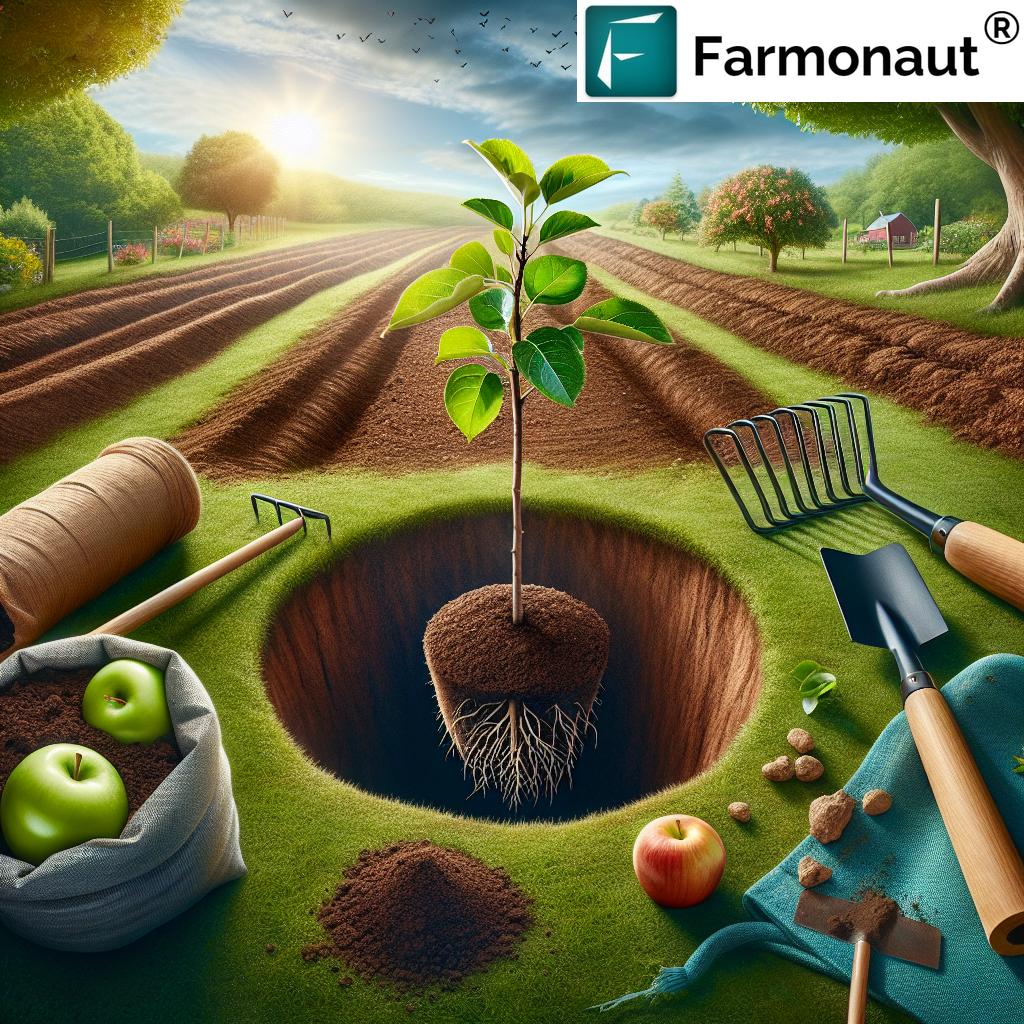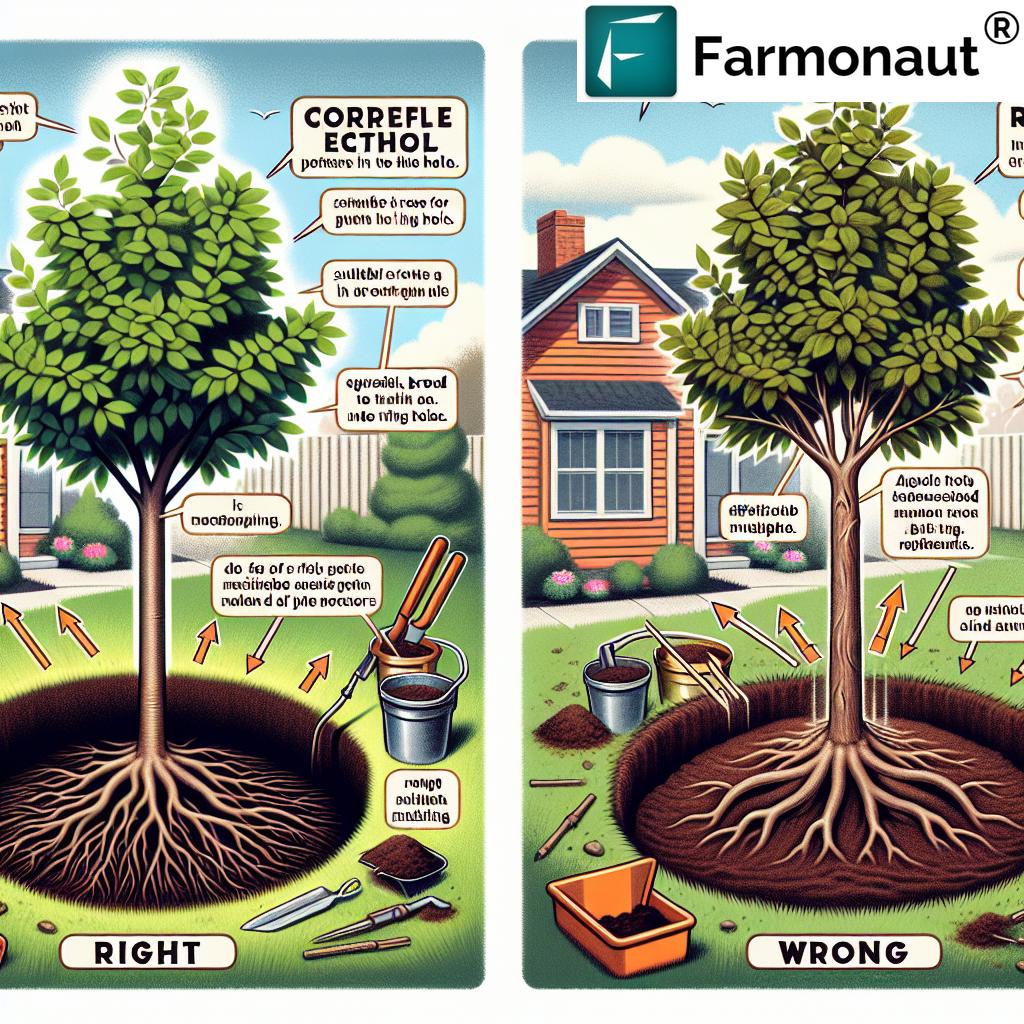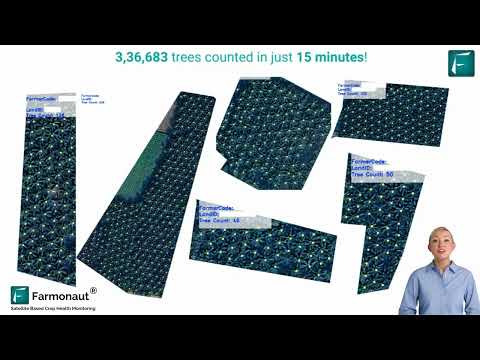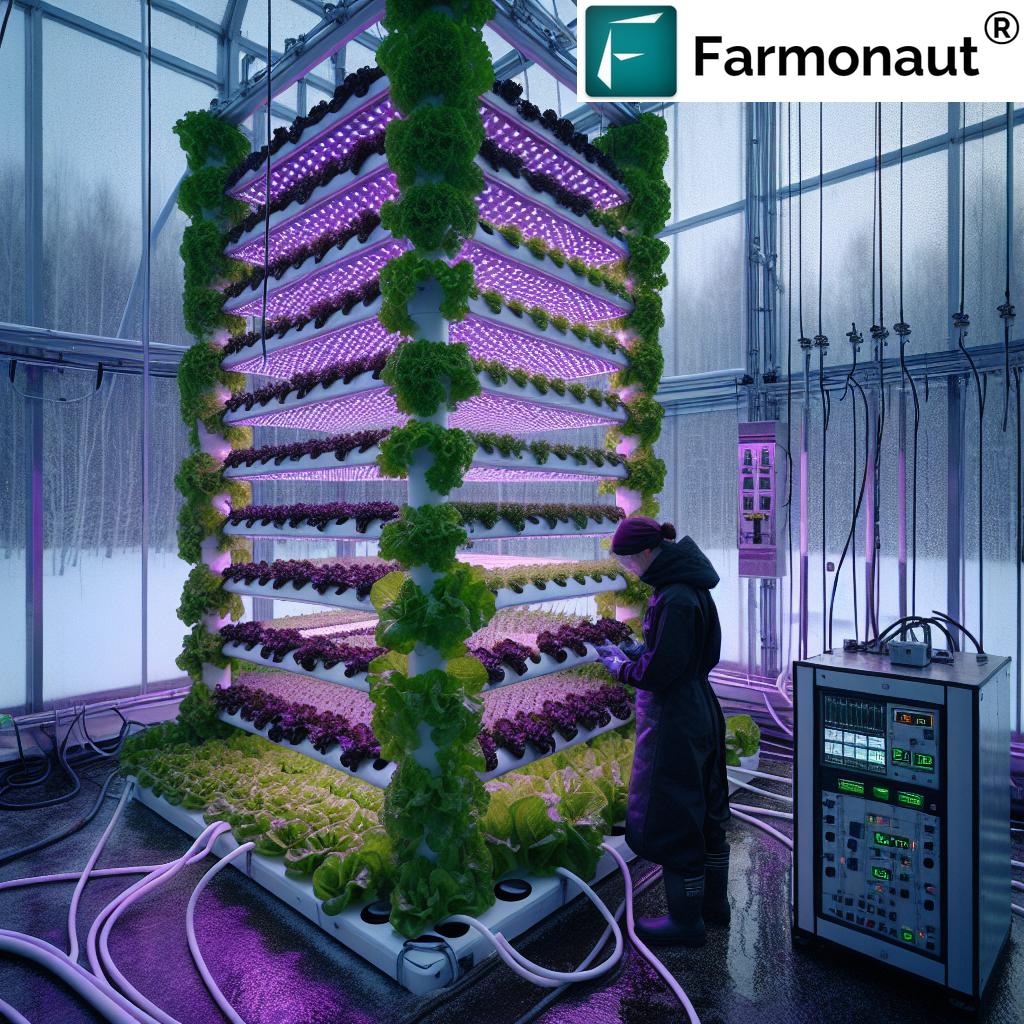10 Essential Tree Planting Tips: A Step-by-Step Guide for Kansas Gardeners
Welcome, fellow Kansas gardeners! Are you ready to transform your landscape with beautiful, thriving trees? We’ve got you covered with our comprehensive guide on tree planting tips tailored specifically for the Sunflower State. Whether you’re a seasoned horticulturist or a budding green thumb, these essential steps will help ensure your new trees get the best possible start in life.
“Kansas gardeners can increase tree survival rates by up to 70% by following proper planting techniques and root care.”

Before we dive into our step-by-step guide, let’s understand why proper tree planting is crucial. Trees not only enhance the beauty of our yards but also provide numerous environmental benefits. They improve air quality, reduce soil erosion, and create habitats for wildlife. In Kansas, where we experience a range of weather conditions, from hot summers to cold winters, planting trees correctly is essential for their long-term health and survival.
Now, let’s explore the 10 essential tree planting tips that will help you create a thriving, sustainable landscape in your Kansas yard.
1. Selecting the Right Tree for Your Site
The first and most crucial step in successful tree planting is choosing the right tree for your specific location. In Kansas, we need to consider our unique climate and soil conditions. Here are some factors to keep in mind:
- Hardiness Zone: Kansas spans USDA Hardiness Zones 5b to 7a. Make sure your chosen tree is suitable for your specific zone.
- Soil Type: Kansas soils range from sandy to clay. Conduct a soil test to determine your soil type and pH level.
- Available Space: Consider the mature size of the tree, including height and canopy spread.
- Sun Exposure: Assess the amount of sunlight your planting site receives daily.
- Purpose: Determine if you want the tree for shade, fruit production, or ornamental value.
When selecting trees, prioritize native species or those well-adapted to Kansas conditions. These trees are more likely to thrive and resist local pests and diseases. For example, crabapple varieties resistant to apple scab and rust diseases are excellent choices for our region.
For personalized recommendations, consult your local K-State Research and Extension office or visit a reputable garden center. They can provide valuable insights into tree varieties that perform well in your specific area of Kansas.
2. Preparing for Planting
Once you’ve chosen the perfect tree, it’s time to prepare for planting. Proper preparation is key to giving your new tree the best possible start. Here’s what you need to do:
- Timing: In Kansas, the best time to plant trees is during the dormant season – in early spring before bud break or in fall after leaf drop.
- Tree Care Before Planting: Keep your tree well-watered and in a shady location until you’re ready to plant. This helps reduce transplant shock.
- Handling: When moving the tree, always lift it by the root ball or container, never by the trunk. This prevents damage to the tree’s structure.
- Remove Packaging: Before planting, remove all wires, labels, cords, or anything else tied to the plant. If left on, these can girdle (strangle) branches as the tree grows.
By following these preparation steps, you’re setting the stage for a successful planting process and giving your tree the best chance to establish itself in its new home.
3. Digging the Perfect Planting Hole
Now that you’re prepared, it’s time to dig the planting hole. This step is crucial for proper root development and tree stability. Here’s how to do it right:
- Depth: The hole should be deep enough so that the root flare (where the trunk begins to widen at the base) is visible and slightly above ground level when planted. This ensures proper oxygen exchange for the roots.
- Width: Make the hole three times wider than the root ball. This loose soil allows roots to spread easily.
- Soil Preparation: Loosen the soil around the hole to five times the diameter of the root ball. This encourages faster root growth.
- Solid Ground: Always plant on solid ground, not fill dirt. If you’ve dug too deep, add soil back and tamp it down before placing the tree.
Remember, in Kansas, our soil types can vary significantly. If you’re dealing with heavy clay soil, consider creating a slight mound when backfilling to improve drainage.
4. Proper Planting Technique
With the hole prepared, it’s time to plant your tree. Follow these steps for optimal results:
- Gently place the tree in the center of the hole, ensuring it’s straight.
- For container-grown trees, carefully remove the container and loosen any circling roots.
- For balled and burlapped trees, place the tree in the hole before removing the burlap and wire basket. Once positioned, cut away as much of the burlap and wire as possible without disturbing the root ball.
- Backfill the hole with the original soil, avoiding amendments like peat moss which can create drainage issues.
- As you fill, tamp the soil lightly to remove air pockets, but avoid over-compacting.
- Water thoroughly as you backfill to ensure good root-to-soil contact.
Proper planting depth is crucial. Planting too deep is a common mistake that can lead to root suffocation and tree decline. Ensure the root flare is visible above ground level after planting.
5. Mulching: The Key to Moisture Conservation
“Applying 2-4 inches of mulch around newly planted trees can reduce water loss by up to 50% in Kansas landscapes.”
Mulching is a critical step in tree care, especially in Kansas where we can experience hot, dry summers. Here’s how to mulch correctly:
- Apply a 2-4 inch layer of organic mulch (like wood chips or shredded bark) around the base of the tree.
- Extend the mulch to cover an area 2-3 times the diameter of the root ball.
- Keep the mulch 3-6 inches away from the trunk to prevent moisture buildup and potential fungal issues.
- Avoid creating a “mulch volcano” – mounding mulch against the trunk can lead to decay and pest problems.
Proper mulching offers numerous benefits:
- Conserves soil moisture
- Regulates soil temperature
- Reduces weed competition
- Prevents lawn mower damage to the trunk
- Improves soil structure as it decomposes
In Kansas, where we can experience extreme temperature fluctuations, mulch acts as an insulator, protecting roots from both heat and cold stress.
6. Watering Schedule for Newly Planted Trees
Proper watering is crucial for newly planted trees, especially during their first growing season. In Kansas, where we can experience periods of drought, a consistent watering schedule is essential. Here’s a guide to help you water effectively:
- Frequency: Water once a week if there’s insufficient rainfall. During hot, dry periods, you may need to water more frequently.
- Amount: Apply about 1-1.5 gallons of water per inch of trunk diameter.
- Method: Water slowly and deeply to encourage deep root growth. A soaker hose or drip irrigation system works well.
- Timing: Water early in the morning to reduce evaporation loss.
Remember, overwatering can be just as harmful as underwatering. Check soil moisture before watering by inserting a screwdriver into the soil. If it goes in easily, the soil is moist enough.
For Kansas gardeners looking to optimize their watering practices, consider using advanced technologies like satellite-based soil moisture monitoring. Tools like those offered by Farmonaut can provide real-time data on soil moisture levels, helping you make informed decisions about when and how much to water your trees.

7. Pruning Guidelines for New Trees
While it might be tempting to prune your newly planted tree, it’s important to exercise restraint. Here are some pruning guidelines to follow:
- Minimal Pruning: Limit pruning to removing dead, damaged, or diseased branches. Extensive pruning can stress the tree and reduce its ability to produce energy through photosynthesis.
- Structural Pruning: If necessary, perform light structural pruning to remove crossing or rubbing branches. This helps establish a strong framework for future growth.
- Timing: In Kansas, the best time for pruning most deciduous trees is during the dormant season (late winter to early spring).
- Tools: Use clean, sharp pruning tools to make clean cuts and reduce the risk of disease transmission.
Remember, each cut you make is a wound to the tree. Pruning should be done with a clear purpose and understanding of how it will affect the tree’s growth and health.
8. Staking Methods: When and How
Staking is not always necessary for newly planted trees, but in Kansas, where we can experience strong winds, it can be beneficial for certain situations. Here’s what you need to know about staking:
- When to Stake: Consider staking if:
- The tree is planted in a windy location
- The tree has a large canopy relative to its root ball
- The tree is top-heavy or leans
- How to Stake:
- Use two or three stakes placed outside the root ball
- Attach wide, flexible ties to the tree at the lowest point where it will stand upright
- Allow some movement of the trunk to encourage strong root and trunk development
- Duration: Remove stakes after one growing season, or a maximum of one year.
Remember, the goal of staking is to anchor the root ball, not to immobilize the trunk. Some movement is necessary for the tree to develop a strong, resilient structure.
9. Soil Preparation and Amendments
While it’s tempting to add soil amendments when planting, research shows that trees establish best in native soil. Here’s what you need to know about soil preparation:
- Soil Testing: Before planting, conduct a soil test through your local K-State Research and Extension office. This will give you valuable information about your soil’s pH and nutrient levels.
- Native Soil: Use the native soil from the planting hole to backfill. Avoid adding amendments like peat moss or potting soil, which can create drainage issues.
- Soil Structure: Focus on improving soil structure rather than fertility. Loosen compacted soil around the planting area to encourage root growth.
- Fertilization: Avoid fertilizing at planting time. Wait until the following year to fertilize if necessary, based on soil test results.
For Kansas gardeners interested in optimizing their soil management practices, consider exploring advanced technologies like those offered by Farmonaut. Their satellite-based soil analysis tools can provide valuable insights into soil health and help you make data-driven decisions about soil management.
10. Long-Term Care for Your Newly Planted Tree
Planting your tree is just the beginning. Proper long-term care is essential for ensuring your tree thrives in its new Kansas home. Here are some key aspects of ongoing tree care:
- Monitoring: Regularly check your tree for signs of stress, pests, or disease. Early detection can prevent many issues from becoming serious problems.
- Watering: Continue to water deeply but less frequently as the tree establishes. After the first year, water during dry spells or when the tree shows signs of drought stress.
- Pruning: Develop a pruning plan to maintain the tree’s structure and health. Different tree species have different pruning requirements, so research your specific tree’s needs.
- Fertilization: After the first year, fertilize based on soil test results and the tree’s growth rate. Avoid over-fertilization, which can lead to weak growth.
- Protection: Shield young trees from lawn mower damage, animal browsing, and extreme weather conditions.
- Mulch Maintenance: Replenish mulch annually, maintaining a 2-4 inch depth and keeping it away from the trunk.
By following these long-term care practices, you’ll help ensure your tree grows strong and healthy, providing beauty and benefits to your Kansas landscape for years to come.
Step-by-Step Guide to Tree Planting in Kansas
| Step | Description |
|---|---|
| 1. Selecting the right tree | Choose a tree suitable for your hardiness zone, soil type, and available space |
| 2. Preparing for planting | Keep the tree watered and shaded until planting; handle by the root ball |
| 3. Preparing the planting hole | Dig a hole 3 times wider than the root ball and at the proper depth |
| 4. Proper planting technique | Place tree at correct depth, backfill with native soil, water as you go |
| 5. Mulching | Apply 2-4 inches of mulch in a 3-foot diameter, keeping away from trunk |
| 6. Watering schedule | Water deeply once a week or more in dry periods for the first growing season |
| 7. Pruning guidelines | Minimal pruning; remove only dead, damaged, or crossing branches |
| 8. Staking methods | Stake only if necessary; allow some trunk movement |
| 9. Soil preparation | Use native soil; avoid amendments unless soil test indicates necessity |
| 10. Long-term care | Monitor health, adjust watering, prune as needed, protect from damage |
Frequently Asked Questions
Q: When is the best time to plant trees in Kansas?
A: The best times to plant trees in Kansas are early spring before bud break or fall after leaf drop. These periods allow trees to establish roots before facing the stress of summer heat or winter cold.
Q: How often should I water my newly planted tree?
A: Water your newly planted tree once a week, providing about 1-1.5 gallons of water per inch of trunk diameter. During hot, dry periods, you may need to water more frequently.
Q: Do I need to fertilize my tree when planting?
A: No, it’s generally not recommended to fertilize at planting time. Wait until the following year, and then fertilize based on soil test results and the tree’s growth rate.
Q: How deep should I plant my tree?
A: Plant your tree so that the root flare (where the trunk begins to widen at the base) is visible and slightly above ground level. Planting too deep is a common mistake that can lead to tree health issues.
Q: What types of trees are best suited for Kansas?
A: Native trees or those well-adapted to Kansas conditions are best. Some good choices include Bur Oak, Hackberry, Kansas Pecan, and certain varieties of Maple and Crabapple. Consult your local extension office for specific recommendations.
Conclusion
Planting trees in Kansas can be a rewarding experience that benefits both your property and the environment. By following these 10 essential tree planting tips, you’ll give your new trees the best possible start in life. Remember, successful tree planting is about more than just digging a hole and dropping in a tree. It requires careful planning, proper technique, and ongoing care.
As you embark on your tree planting journey, consider leveraging modern technologies to enhance your gardening efforts. Tools like those offered by Farmonaut can provide valuable insights into soil health, moisture levels, and overall plant health, helping you make data-driven decisions about tree care.
Whether you’re planting a single shade tree or creating a diverse landscape, these guidelines will help ensure your trees thrive in the unique Kansas climate. Happy planting, and here’s to growing a greener, more beautiful Kansas!
Additional Resources
For more information on tree planting and care in Kansas, check out these resources:
And don’t forget to explore the advanced agricultural technologies offered by Farmonaut:
Earn With Farmonaut: Affiliate Program
Earn 20% recurring commission with Farmonaut’s affiliate program by sharing your promo code and helping farmers save 10%. Onboard 10 Elite farmers monthly to earn a minimum of $148,000 annually—start now and grow your income!



















